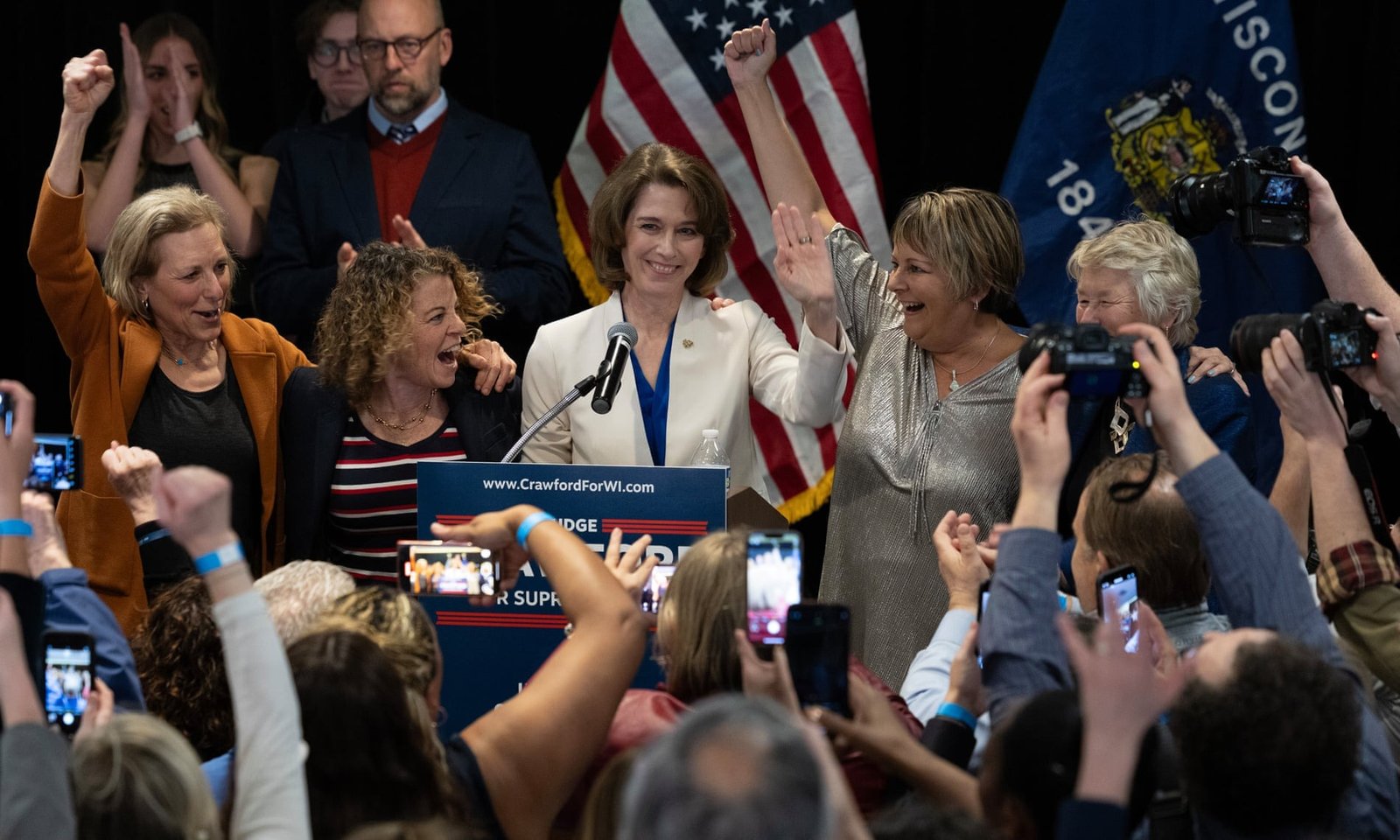Wisconsin Judicial Election: A Historic Turning Point
In a landmark event that has captured national attention, Wisconsin voters have elected Susan Crawford, a Democratic-backed candidate, to the state supreme court. This victory comes after the most expensive judicial election in US history, with over $100 million spent by the candidates and their supporters. Crawford’s win is projected to maintain the 4-3 liberal majority on the state’s highest court, a significant development that could have far-reaching implications for the balance of power in the US Congress.
Crawford’s Ascendancy and Its Implications
With approximately three-quarters of the ballots counted, Susan Crawford secured about 55% of the vote, significantly ahead of her conservative rival, Brad Schimel, who garnered around 45%. This outcome is a notable setback for President Donald Trump, who had endorsed Schimel. Trump’s billionaire adviser, Elon Musk, played a prominent role in the campaign, raising funds and distributing millions to voters who pledged support for conservative causes. Crawford, a former private lawyer for Planned Parenthood and a staunch advocate for abortion rights, is poised to influence key upcoming cases, including those related to abortion and congressional redistricting.
The Role of Elon Musk in the Campaign
Elon Musk’s involvement in the Wisconsin judicial election was highly scrutinized. As a prominent fundraiser for Schimel, Musk faced attacks from Crawford’s supporters. His actions included distributing $1 million checks to voters who signed petitions against “activist judges” and offering $50 to anyone who photographed a Wisconsin resident holding a photo of Schimel outside a polling site. Musk’s significant financial contributions, totaling over $20 million, underscored his influence and the high stakes of the election.
Voter Turnout and Ballot Shortages
The election saw unprecedented voter turnout, particularly in Milwaukee, a Democratic-leaning city. Officials reported a shortage of ballots due to the historic number of voters, highlighting the intense interest and engagement of the electorate. This surge in participation reflects the importance of the judicial race and its potential impact on future legislative and policy decisions in Wisconsin.
Constitutional Amendments and Voter ID Laws
In addition to the judicial election, Wisconsin voters also approved a constitutional amendment requiring voters to show ID at polling sites. While this requirement was already in place, enshrining it in the state constitution makes it more difficult to change in the future. Crawford opposed this amendment, adding another layer of complexity to the election’s outcomes and its implications for civil liberties and voting rights.
Future Implications for Congressional Redistricting
Wisconsin’s supreme court is expected to play a pivotal role in determining the shape of congressional districts, especially if Democrats challenge current district maps. With Republicans currently holding six of the state’s eight seats in the US House of Representatives, the judicial race’s outcome could influence the balance of power in Congress. Musk’s assertion that the judicial race was about control of the US House of Representatives underscores the broader political ramifications of this election.
In conclusion, the Wisconsin judicial election represents a historic moment with significant implications for the state and the nation. Susan Crawford’s victory, the unprecedented voter turnout, and the high-profile involvement of figures like Elon Musk all point to the critical importance of this race. As Wisconsin looks ahead to key legislative battles and the 2026 Midterm elections, the decisions made by its supreme court will undoubtedly shape the political landscape for years to come.




